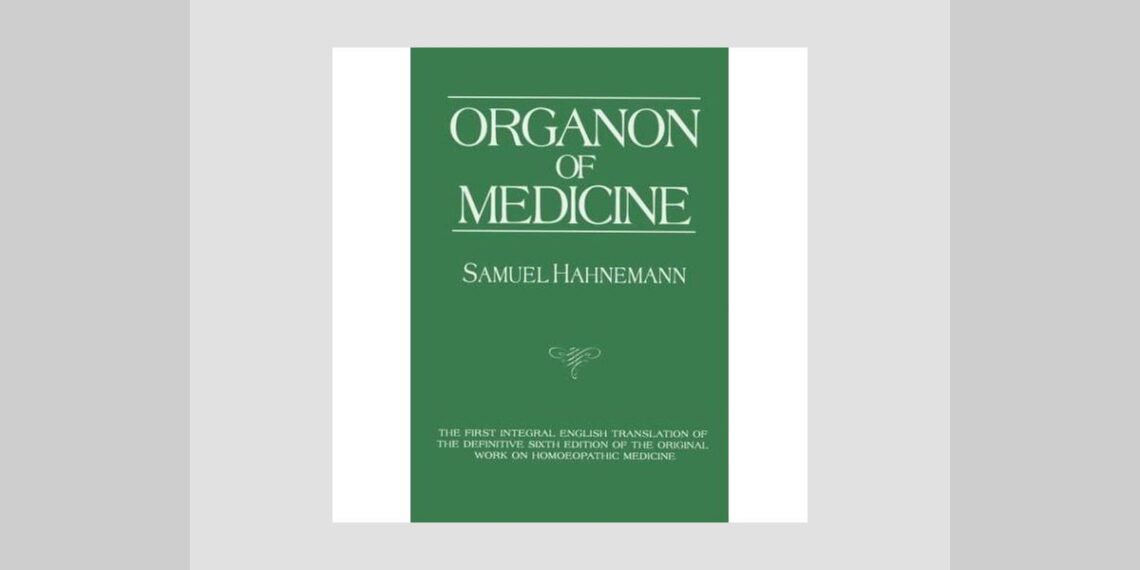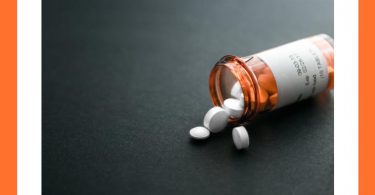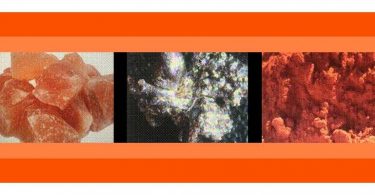n this writing we start to gain a strong appreciation that the origin and destiny of man, as well as natural disease and its treatment, is divinely inspired, as is the knowledge that all seek to remedy disease. We also ?nd a mature criticism of the prevailing system of medicine and its degeneration into polypharmacy due to a profound misunderstanding of the nature of disease (a generative act).
And yet, oh man! how lofty is thy descent! how great and God-like thy destiny! how noble the object of thy life! Art thou not destined to approach by the ladder of hallowed impressions, ennobling deeds, all-penetrating knowledge, even towards the great Spirit whom all the inhabitants of the universe worship? Can that Divine Spirit who gave thee thy soul, and winged thee for such high enterprizes, have designed that you should be helplessly and irremediably oppressed by those trivial bodily ailments which we call diseases?
Ah, no! The Author of all good, when he allowed diseases to injure his offspring must have laid down a means by which those torments might be lessened or removed….This art must be possible…it must not only be possible, but already exist. Every now and then a man is rescued, as by miracle, from some fatal disease. (Lesser Writings, p. 410)
At the same time it is undeniable, that even in such calamities, so humiliating to the pride of our art, but rare cures occur, effected obviously by medicine, of so striking a character, that one is astonished at so daring a rescue from the very jaws of death; these are the hints afforded by the Author of Life, “THAT THERE IS A HEALING ART. (Lesser Writings, p. 418)In no other case is the insufficiency of our art so strongly and so unpardonably manifested as in those distressing diseases from which hardly any family is altogether free; hardly any in which some one of the circle does not secretly sigh over ailments, for which he has tried the so-called skill of physicians far and near. In silence the afflicted sufferer steals on his melancholy way, borne down with miserable suffering, and, despairing in human aid, seeks solace in religion.
‘Yes,’ I hear the medical school whisper with a seeming compassionate shrug, ‘Yes, these are notoriously incurable evils; our books tell us they are incurable.’ As if it could comfort the million of sufferers to be told of the vain impotence of our art! As if the Creator of these sufferings had not provided remedies for them also, and as if for them the source of boundless goodness did not exist, compared to which the tenderest mother’s love is as thick clouds beside the glory of the noonday sun! (Lesser Writings, p. 415)
Then Hahnemann condemns the heroic measures used (“such modes of treatment are not very unlike murders”).
This cannot be the divine art, that like the mighty working of nature should effect the greatest deeds simply, mildly, and unobservably, by means of the smallest agencies.(Lesser Writings, p. 417)
The history of medicine has been one of
…covering over the gaps and inconsistencies of their knowledge by heaping system upon system, each made up of the diversified materials of conjectures, opinions, definitions, postulates, and predicates, linked together by scholastic syllogisms. (Lesser Writings, p. 420.)
The true path of Hippocrates, simple observation of nature, led to increasingly complicated systems built upon confusion and lack of knowledge of remedies. At the same time, the original search for the universal remedy based on a uniformitarian notion of disease (commendable although misguided) degenerated into the indiscriminate use of many remedies to cover the case – the unipharmacy and polypharmacy axle of the failure to comprehend the true nature of disease.
Sophistical whimsicalities were pressed into service. Some sought the origin of disease in a universal hostile principle, in some poison which produced all maladies, and which was to be contended with and destroyed. Hence the universal antidote which was to cure all diseases, called theriaca, composed of an innumerable multitude of ingredients, and more lately the mithridatium, and similar compounds, celebrated from the time of Nicander down almost to our own day. From these ancient times came the unhappy idea, that if a sufficient number of drugs were mixed in the receipt, it could scarcely fail to contain the one capable of triumphing over the enemy of health – while all the time the action of each individual ingredient was little, or not at all known…
In this great period of nearly two thousand years, was the pure observation of disease neglected…” (Lesser Writings, p. 421)
What is more natural, what more appropriate to the weakness of man, than that he should adopt the unhappy resolution (the resolution of almost all ordinary physicians in similar cases!), that as he has nothing to direct his choice to the best, he had better give a number of the most celebrated febrifuge medicines mixed together in one prescription. (Lesser Writings, p. 426)
To return to our earlier question, as to why Hahnemann made a clean break with the Old School of medicine around 1800-1803, we may perhaps consider the growing understanding of the dynamic nature of disease and the nullity of any measures that simply seek to remove disease effects (materia peccans), plus the growing consciousness of the dynamic nature of medicine, being the aspect that cures (crude doses being themselves disease inducing).
These two tendencies came together in the discovery of a remedy for scarlet fever, both preventatively and for any sequelae of that disease then af?icting Europe. The epidemic emerged in the middle of 1799 and Hahnemann, using his new maxims, was able to examine the symptoms of the disease and ?nd Belladonna to be the “speci?c preservative remedy.” The results were all that could be expected of this new “medicine of experience.”
What is also remarkable is the dose that Hahnemann was advocating. Prior to this, he had used relatively crude doses, but the medicinal aggravation caused initially in administering the similar substance (homeopathic aggravation), led him to attenuate the dose even more. In 1798, Hahnemann recommends doses of several grains to 30-40 grains, depending on the substance. Later that same year, he is recommending the giving of small doses in liquid form (1-2 milligrams – 0.001-0.002 grains – in solution). The next year he announces with no apparent explanation even smaller (so-called in?nitesimal) doses, being in the order of one ten millionth of a grain for Arsenic (0.00000001 grains) (Haehl, Vol. I, p. 312). However, the ?rst clear statement of these in?nitesimal diluted doses comes with the discovery of the remedy for scarlet fever.
If we now wish to prepare from this prophylactic remedy, we dissolve a grain of this powder (prepared from well preserved belladonna extract evaporated at an ordinary temperature) in one hundred drops of common distilled water, by rubbing it up in a small mortar; we pour the thick solution into a one-ounce bottle, and rinse the mortar and pestle with three hundred drops of diluted alcohol (five parts of water to one of spirit), and we then add this to the solution, and we render the union perfect, by diligently shaking the liquid. We label the bottle strong solution of belladonna. One drop of this is intimately mixed with three hundred drops of diluted alcohol by shaking it for a minute, and this is marked medium solution of belladonna. Of this second mixture one drop is mixed with two hundred drops of the diluted alcohol, by shaking for one minute, and marked weak solution of belladonna; and this is our prophylactic remedy for scarlet-fever, each drop of which contains the twenty-four millionth part of a grain of the dry belladonna juice. (Haehl, Vol. I, p. 381)
Hahnemann gave the weak solution in drop form (up to 40 drops according to age), one dose every 72 hours “well stirred for a minute in any kind of drink.” (Haehl, Vol. I, p. 381) He seems to have favored the liquid dose, as it had more points of contact (although he thought the contact was in the stomach).
Very different [from the hard grain-pill] is it with a solution, and particularly with a thorough solution. Let this be as weak as it may, in its passage through the stomach it comes in contact with many more points of the living fibre, and as the medicine does not act atomically but only dynamically, it excites much more severe symptoms than the compact pill… (Lesser Writings, p. 387).
This reference to thorough solutions is to those well-shaken, which Hahnemann here found to make the solution “very intimate.” (For a more thorough examination of the issue of dose and potency, please refer to the article by this author in the March 2008 edition of Homeopathy for Everyone.)
Such small doses now brought forth criticism as to its possible effectiveness. Hahnemann answered publicly in an edition of Hufeland’s journal of 1801. While Hahnemann continued to experiment with dosage in order to better understand the effects, and while he only came to more fully grasp that what was active was the dynamis of the medicine (referring to potency rather than dilution only around 1814 – see Haehl, Vol. I, p. 317), he now came to realize the power of medicine to cure without the need for other aid, which simply often worked to weaken the life force of the patient. Where other measures were needed, Hahnemann provided these in the form of regimen to build up the life force. He imitated nature in the context of health, not disease (which was what the allopaths sought to do). (Lesser Writings, p. 386)[1]
Another interesting aspect of this small work on scarlet fever is the understanding that a constant disease can develop from its initial, primary (tonic) form into other disease forms that are more variable. Thus, while Belladonna seems to work for prevention (initial contact) and the early stages (as well as the sequelae), the later stages require other remedies according to the symptoms. This provides an early basis for what Hahnemann later discovered with the chronic diseases, namely that there were some remedies that seemed almost speci?c for initial stages of the chronic miasms (the primary disease itself), but that the number of remedies for later variable states of chronic disease the secondary diseases that were produced by the primary disease) increased as time went on.
# # #
Rudi Verspoor is Dean and Chair Department of Philosophy, Hahnemann College for Heilkunst, Ottawa. He has written extensively on homeopathy and created the only college in the world offering a full program of study in Hahnemann’s complete medical system, Heilkunst. More details on studying Heilkunst can be obtained from www.homeopathy.com.
Rudi founded the National Association of Trained Homeopaths (NUPATH) in Canada, as well as the Canadian/International Heilkunst Association (C/IHA). He has advised the Canadian government on healthcare issues, made presentations to various federal and provincial governments on homeopathy, and has written for various journals as well as lectured around the world.
His publications include: Homeopathy Renewed, A Sequential Approach to the Treatment of Chronic Illness (with Patty Smith); A Time for Healing; Homeopathy Re-examined: Beyond the Classical Paradigm (with Steven Decker); The Dynamic Legacy: Hahnemann from Homeopathy to Heilkunst (with Steven Decker)
The website at www.heilkunst.com has more articles and resources about Heilkunst.




